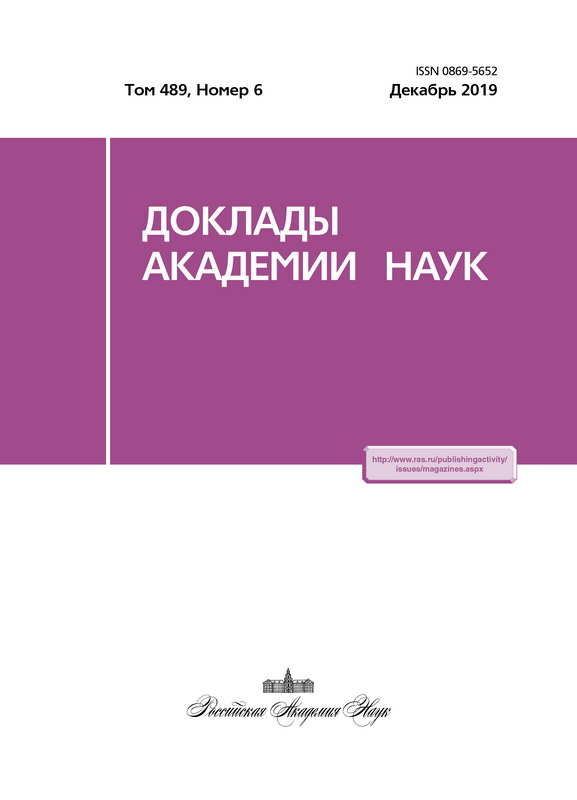Генетические элементы ответа на ксенобиотики (XRE) в составе гена CYP1A1 человека повышают активность промотора hTERT
- Авторы: Шепелев М.В.1, Калиниченко С.В.1, Саакян Е.К.1, Коробко И.В.1
-
Учреждения:
- Институт биологии гена Российской академии наук
- Выпуск: Том 485, № 5 (2019)
- Страницы: 634-637
- Раздел: Биохимия, биофизика, молекулярная биология
- URL: https://journals.eco-vector.com/0869-5652/article/view/14321
- DOI: https://doi.org/10.31857/S0869-56524855634-637
- ID: 14321
Цитировать
Аннотация
Создали гибридный промотор 6XRE-hTERT, состоящий из опухолеспецифического промотора hTERT и шести копий элементов XRE из промотора гена CYP1A1 человека. На модели клеток рака лёгких человека показали, что элементы XRE в составе гибридного промотора существенно повышают активность промотора hTERT и обеспечивают активацию транскрипции репортёрного гена в ответ на обработку клеток лигандом AhR бенз(a)пиреном. Однако сходные эффекты были обнаружены и в клетках нормального эпителия бронхов человека линии HBEpC, что свидетельствует об утрате опухолеспецифической активности гибридным промотором 6XRE-hTERT. Элементы XRE могут быть использованы для неспецифического усиления транскрипции, но непригодны для создания опухолеспецифических промоторов с повышенной активностью.
Об авторах
М. В. Шепелев
Институт биологии гена Российской академии наук
Автор, ответственный за переписку.
Email: mshepelev@mail.ru
Россия, 119334, г. Москва, ул. Вавилова, 34/5
С. В. Калиниченко
Институт биологии гена Российской академии наук
Email: mshepelev@mail.ru
Россия, 119334, г. Москва, ул. Вавилова, 34/5
Е. К. Саакян
Институт биологии гена Российской академии наук
Email: mshepelev@mail.ru
Россия, 119334, г. Москва, ул. Вавилова, 34/5
И. В. Коробко
Институт биологии гена Российской академии наук
Email: mshepelev@mail.ru
Россия, 119334, г. Москва, ул. Вавилова, 34/5
Список литературы
- Das S.K., Menezes M. E., Bhatia S., Wang X. Y., Emdad L., Sarkar D., Fisher P. B. // J. Cell Physiol. 2015. V. 230. P. 259-271.
- Fujiwara T., Urata Y., Tanaka N. // Curr. Cancer Drug Targets. 2007. V. 7. P. 191-201.
- Wirth T., Zender L., Schulte B., Mund B., Plentz R., Rudolph K. L., Manns M., Kubicka S., Kuhnel F. // Cancer Res. 2003. V. 63. P. 3181-3188.
- Davis J.J., Wang L., Dong F., Zhang L., Guo W., Teraishi F., Xu K., Ji L., Fang B. // Cancer Gene Ther. 2006. V. 13. P. 720-723.
- Shepelev M.V., Kopantzev E. P., Vinogradova T. V., Sverdlov E. D., Korobko I. V. // Oncol. Lett. 2016. V. 12. P. 1204-1210.
- Калиниченко С.В., Шепелев M. В., Вихрева П. Н., Коробко И. В. // Acta Naturae. 2017. Т. 9. С. 66-73.
- Murray I.A., Patterson A. D., Perdew G. H. // Nat. Rev. Cancer. 2014. V. 14. P. 801-814.
- Li S., Pei X., Zhang W., Xie H. Q., Zhao B. // Int. J. Mol. Sci. 2014. V. 15. P. 6475-6487.
- Sarkar P., Shiizaki K., Yonemoto J., Sone H. // Int. J. Oncol. 2006. V. 28. P. 43-51.
Дополнительные файлы







